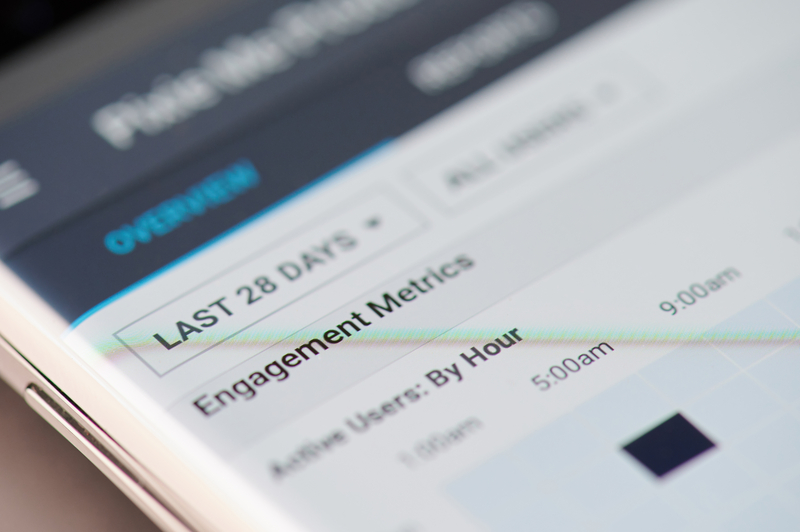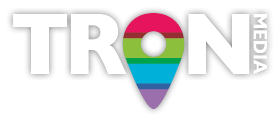
Facebook metrics
Facebook impressions metrics represent the number of times your ad or content was viewed on a user’s screen. If you want to keep tabs on this Facebook metric to see how many people viewed your content, you can either use Facebook insights or a third-party analytics tool.
Approximately 2.9 billion people use Facebook every single day, according to Statista. Despite the fact that many businesses and brands are moving to other social media platforms, Facebook still dominates social media marketing. This social media platform offers a variety of business prospects, from Facebook groups to its effective advertising alternatives. The best way to keep an eye on your Facebook presence, which helps you draw in new customers and grow your business, is to monitor your Facebook statistics.
Below is what is required.
1. Reach
The “reach” refers to the total number of people who have viewed any content from or about your Page. It is a hypothetical statistic. Impressions indicate how frequently a person has seen content from or relevant to your Page on their screen. We change the organic impressions metric to accommodate updated Facebook policies and new products.
Your reach statistics are also available to the Meta Business Suite.
2. Engagement rate
The entire number of likes, comments, shares, and reactions divided by the total number of page followers yields the Facebook engagement rate. This will show you how many interactions each of your uploaded materials has had. The higher this number, the more likely it is that subsequent posts will attract more interaction.
A decent Facebook engagement rate is what?
What exactly does a high Facebook engagement rate look like? Obviously, it depends on whom you question. According to Hootsuite, the average interaction rate for status updates in 2023 will be 0.11 percent, compared to 0.08 percent for videos and 0.12 percent for photos.
How is Facebook engagement rate determined?
The average engagement rate per post by reach on Facebook is calculated by dividing the overall engagement (reactions, comments, and shares) by the number of posts the page publishes. Next, the outcome is multiplied by 100 and the whole reach is divided.
3. Follower’s growth
Weekly growth for a Facebook page is typically 0.64%. Therefore, a fan page with 1,000 followers will get about 25 new followers each month, which is quite slow in comparison to the best fan pages, or the top 10%, which have a growth rate of 2.22% each week, or an increase of nearly 88 followers each month.
More people are connecting with and enjoying your content, as seen by a rising page.
It’s important to keep track of both your current following and your lost followers over a specific period of time.
Keep in mind that you can only gauge the increase in your Facebook followers by using a social media analytics platform because this data is not provided by the native app.
How do I see Facebook following growth?
Go to your Page. Select Activity from the menu at the top of your Page. Scroll down and tap Followers. Here, you can check the number of new followers for your Page, broken down into paid and non-paid followers.
From influencer marketing to Facebook ads, there are various ways to boost the number of people that follow your Facebook page. By combining eye-candy and brief pieces of content, you may always increase the number of Facebook users that visit your page.
4. Impressions
The term “Facebook impressions” refers to the total number of times your advertisement was viewed on a user’s timeline on Facebook, Instagram, or the Audience Network. This figure is vital for social media marketers to track since it shows whether your advertisement is compelling.
How many Facebook impressions are desirable?
The usual rule of thumb is that 1-3 impressions per user work well if you want your audience to remember your advertisement more. The cost per mille (CPM) can play a big role in determining how many impressions are best for your ads. The ideal strategy for purchasing Facebook advertisements is CPM.
To track this Facebook indicator and determine how many people have seen your post, utilise Facebook insights or a third-party analytics programme. You may also examine the Facebook impressions metric in Facebook Insights by performing the actions below:
- Go to your Facebook business page.
- Click the “Page Insights” button in the “Manage Page” sidebar to access page insights.
- The screen’s left sidebar provides access to the “Posts” button.
- Change “Reach: Organic/Paid” to “Impressions: Organic/Paid.”
Similar to Reach, Facebook impressions are split into two primary categories:
- Facebook uses the term “Organic” to describe how frequently users have viewed your content for free in their News Feed.
- When you pay for content to show on someone’s profile, Facebook analyses how often users encounter that content.
5. Audience adherence
Audience retention is one of the metrics included in Facebook video analytics. This statistic shows how long a user watched a video.
The videos that received the highest engagement from your followers can then be seen.
This Facebook feature aids in the modification of your social media strategy if you discover that a particular type of video is better suitable for your audience.
Low audience retention is a sign of either an unnecessarily long or uninteresting video.
You might need to adjust the length of your films as well as, in certain cases, the content.
“Video retention” on Facebook is defined as “the amount of time viewers spend watching the videos you publish to your Page.”
This Facebook indication shows how long a video is able to keep viewers’ attention.
This key figure needs to be closely watched because it can help you understand how long visitors are watching your videos on average and when they usually stop.
6. Click-Through Rate (CTR)
Your CTR is calculated by dividing the total number of clicks on your advertisement by the total number of impressions it receives. For example, if there were 5 clicks and 100 impressions, your CTR would be 5%.
Facebook advertising has high click-through rates, which is what draws advertisers to spend astronomical amounts of money there.
Actually, according to data, both paid and organic posts on Facebook get the highest CTR.
Social media managers should be aware that Facebook advertisements perform better than Instagram commercials when it comes to CTR, as demonstrated by our most recent study comparing Facebook and Instagram ads.
According to data, Facebook advertising really has a CTR that is four times higher than Instagram ads.
Realise that constant optimisation and in-depth study are essential when looking at your Facebook ad campaign and these Facebook metrics.
In terms of average CTR, the Facebook video feed is in second position.
To get into the specifics of the research, Facebook CTR analytics also show that the right column of Facebook and Facebook Stories is the least effective Facebook advertising formats.
7. Cost per Thousand Impressions (CPM)
The phrase “cost per mille,” often known as “CPM,” refers to the cost per thousand impressions (the Latin word “mille” meaning “thousands”). CPM, or the normal amount you spend each time 1,000 online browsers load your ads, stands for cost per thousand impressions.
Our most recent analysis of Facebook ads provides advertisers with some valuable CPM data. Facebook feeds trail Facebook video feeds in terms of average CPM.
8. Cost per Click (CPC)
What was the total price of that conversion, taking everything into account? By how many clicks you get, divide the overall cost of your social media marketing strategy.
The cost per click (CPC) metric is one that you should closely monitor if you run Facebook adverts.
Because many businesses invest considerable sums of money in Facebook advertising, a detailed examination of your Facebook advertisement data is necessary for a comprehensive, impenetrable Facebook strategy report.
Additionally, compared to Facebook feeds or Facebook right columns, the CPC for Facebook video feeds is lower.
9. Best time to post
The greatest times to post on Facebook are Tuesdays and Thursdays between 8 a.m. based on an analysis of 30,000 social media posts by Hootsuite and at midday. You must, of course, take into account the various time zones where your audience is located when setting these posting times.
According to a recent study, content created over the weekend had a 25% higher engagement rate than content created during the workweek.
10. Followers demographics
You can better adapt your message, tone of voice, and content to each individual following by being aware of where your audience is from.
You can do this by taking a look at follower demographics like gender, geography (country or even city), and educational attainment.
Young male users between the ages of 18 and 24 make up 13.3% of all active Facebook users worldwide, while young female users make up 9.3%, according to Statista.
With this in mind, you may create material that will fascinate young people and establish a Facebook strategy to attract their attention.
It’s important to prioritise your own demographic, though.
If the bulk of your audience is made up of people over 25, or even over 30, keep the majority of your content relevant to that age range while yet offering certain pieces that are meant to appeal to the younger segment.
Consider looking at the demographics of your page’s fans.
- Viewing visitor demographic data about your page visitors:
- Click Pages in the menu on the left to access your Feed.
- Go to your Page and choose Insights from the left menu.
- Click People on the left.
- Click the “Fans” section to see the percentage of people who like your Page by age, gender, nation, town/city, and language.
Find out when the Facebook users who like your page are online.
You may find out what hours Facebook users who like your page are online by doing the following:
- To access your Feed, click Pages in the menu on the left.
- Go to your Page and choose Insights from the left menu.
- Go to Posts on the left.
When your fans are online section allows you to view data from a recent one-week period on the days of the week and times that people who like your Page are on Facebook.
11. Mentions
When you submit a post or comment and expressly mention a person or page by name on Facebook, this is known as a mention. The mentioned person receives notification that they were mentioned, and in place of their name, a blue link to that page or profile is displayed.
From your Facebook analytics dashboard, you can use Socialinsider to monitor Facebook page mentions.
How Should Facebook Users Be Mentioned?
It’s typically as simple as starting to type a friend’s name and letting Facebook suggest the person you wish to mention as long as you capitalise and start spelling their name correctly. But what if you want to mention someone who isn’t a friend? The @ symbol is then appropriate to use. If you type @ followed by the first few letters of a name, for example, “@davies,” you will see a list of people with whom you might or might not be connected right away.
Conclusion
Choosing your target audience is the first step in creating a social media marketing strategy. But this is not enough. Constant observation is also necessary in order to produce high-quality content. Here at Tronmedia, we are able to create that high-quality content that is needed to boost your online presence and get your business noticed.
TRON Media is a leading Digital Marketing Agency in Brighton. Get in touch today to discover more about our services and learn what a creative digital agency can do for your business. Contact us using our Contact Form, call us on 020 3006 6889 or email us at: [email protected].
